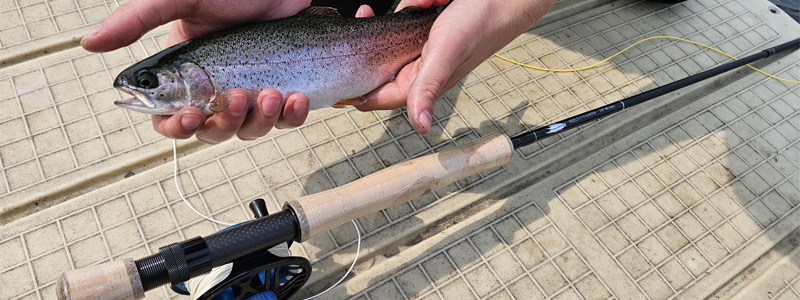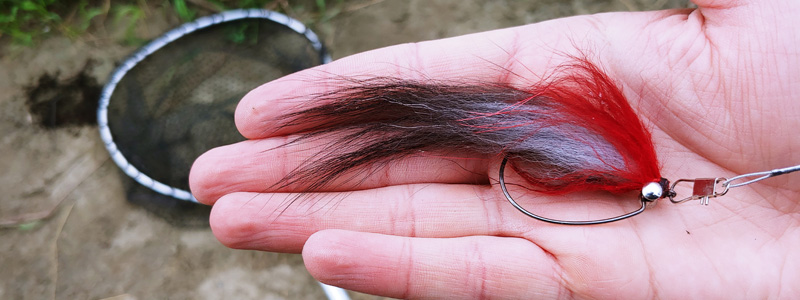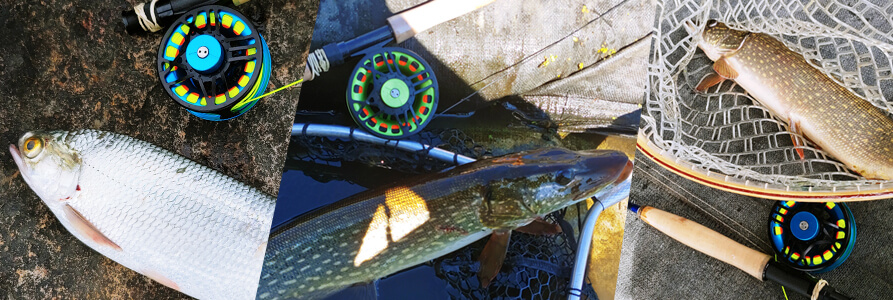When it comes to angling, fly fishing and regular (spin) fishing are two distinct approaches that offer unique experiences. In this article, we’ll explore the key differences between fly fishing vs regular spin fishing, helping you understand which method might be best for your next fishing trip.
What Are the Main Differences Between Fly and Regular (spin) Fishing?
Let’s dive into the world of fishing and explore the key differences between fly fishing and spin fishing. It’s like comparing apples and oranges – both are fruit, but they’re quite different!
Casting Techniques
In fly fishing, the casting technique is unique. You’re not really casting the lure; you’re casting the line. It’s a bit like cracking a whip, with the fly gently landing on the water. Spin fishing, on the other hand, relies on the weight of the lure or bait to carry the line.
Types of Lures Used
Fly fishing uses artificial flies that imitate insects or small prey. These are super lightweight and often handmade. Spin fishing uses a variety of lures or live bait, which are generally heavier and sink in the water.
Gear and Equipment
The gear for fly fishing is quite specialized. You’ve got a longer, more flexible rod, a special fly reel, and that all-important fly line. Spin fishing gear is more versatile, with shorter rods and reels designed for different techniques.
Target Fish Species
While you can catch many types of fish with both methods, traditionally, fly fishing is often associated with trout and salmon. Spin fishing is associated with any other species, from small species like perch to pike to ocean fish. As we mentioned, however, you can catch just as many fish species with fly fishing as well. Pike on the fly can be quite exciting!
Learning Curve and Skill Requirements
Let’s be honest, fly fishing has a steeper learning curve. It takes time to master that casting technique! Spin fishing is generally easier to pick up, making it more accessible for beginners. Having said that, once you get used to the ways of fly casting, you can embark on an amazing journey. You must also remember, many times you do not need to cast far to begin with. In fact, my (Dave’s) first fish on the fly was 5ft in front of me, because that’s all I could cast.
What Are the Pros and Cons of Fly Fishing?
Now that we’ve covered the basics, let’s weigh the pros and cons of fly fishing.
Advantages of Fly Fishing
Fly fishing can be incredibly rewarding. It’s often seen as more of an art form, allowing for precise presentation of the fly. Many anglers find it more challenging and engaging. Plus, it’s great for catching fish that feed near the surface.
Challenges and Potential Drawbacks
The learning curve we mentioned earlier? That’s definitely a potential drawback. Fly fishing also requires more specialized and often more expensive gear (don’t be discourages, we sell quality fly fishing gear you can trust at reasonable prices and warranties). It can be trickier in windy conditions or when fishing in deep water.
Comparison to Spin Fishing Benefits
Spin fishing has its own set of advantages. It’s more versatile, allowing you to fish in a wider range of conditions and for more species. The gear is often less expensive and easier to use, making it more accessible for casual anglers.
How Do Fly Fishing Techniques Differ from Regular Fishing?
Let’s get into the nitty-gritty of fly fishing techniques and how they compare to regular fishing.
Explanation of Fly Casting
Fly casting is all about rhythm and timing. You’re using the weight of the line to carry the lightweight fly to its target. It involves a back-and-forth motion, building up momentum before releasing the line forward.
Comparison to Spin Casting and Bait Casting
Spin casting and bait casting, common in regular fishing, rely on the weight of the lure or bait. You’re essentially just throwing the lure out there. It’s a simpler motion, but it can still take practice to master accuracy and distance.
Presentation of the Fly vs. Traditional Lures
In fly fishing, presentation is key. You’re trying to make that fly look as natural as possible, often aiming for a specific spot on the water. With regular fishing, while presentation is still important, you have more leeway thanks to the action of the lure itself.
When Should You Choose Fly Fishing Over Regular Fishing?
Wondering when to break out the fly rod? Let’s look at some scenarios where fly fishing shines.
Best Water Conditions for Fly Fishing
Fly fishing is often best in clear, moving water. Think mountain streams or rivers. It’s great for fishing in shallow water or targeting fish feeding near the surface.
Ideal Fish Species for Fly Fishing
While you can fly fishing is known for trout, with some exceptions, the sky is the limit in what species you can fly fish for. Some of these exceptions are species that use smell to find and eat food, like sturgeon. It will be incredibly hard (if not impossible) to catch a sturgeon without bait, but you can certainly catch many other species, from trout to salmon, to walleye, to bass, etc. These more aggressive the species, the easier is it to catch them. There is a joke that you can catch northern pike with an empty hook…well, we did get one like that so it’s not much of a joke… Also, don’t stick your hand in a pike’s mouth (very sharp teeth)!!
Seasonal Considerations
Fly fishing can be great year-round, but it’s particularly popular during insect hatches. Spring and early summer, when many insects are emerging, can be prime time for fly fishing.
Fly Fishing vs Spin Fishing: Which is Right for You?
Still not sure which method to choose? Let’s break it down a bit further.
Comparison of Gear and Techniques
Fly fishing gear is specialized, with a focus on lightweight presentation. Spin fishing gear is more versatile and can handle heavier lures. The techniques differ significantly, with fly fishing requiring more finesse and precision.
Skill Levels Required for Each Method
While both methods require skill to master, fly fishing generally has a steeper learning curve. Spin fishing is often easier for beginners to pick up.
Versatility and Adaptability of Both Approaches
Spin fishing is generally more versatile, allowing you to fish in a wider range of conditions and for more species. However, once mastered, fly fishing can be adapted to many situations, and some anglers find it more rewarding.
Remember, there’s no right or wrong choice between fly fishing and regular fishing. It all comes down to personal preference, the type of fishing you want to do, and the experience you’re after. Why not try both and see which one hooks you?
Conclusion
Understanding the differences between fly fishing and regular fishing can help you choose the right method for your angling goals. Whether you prefer the artistry of fly casting or the versatility of spin fishing, both approaches offer unique rewards for anglers of all skill levels.








